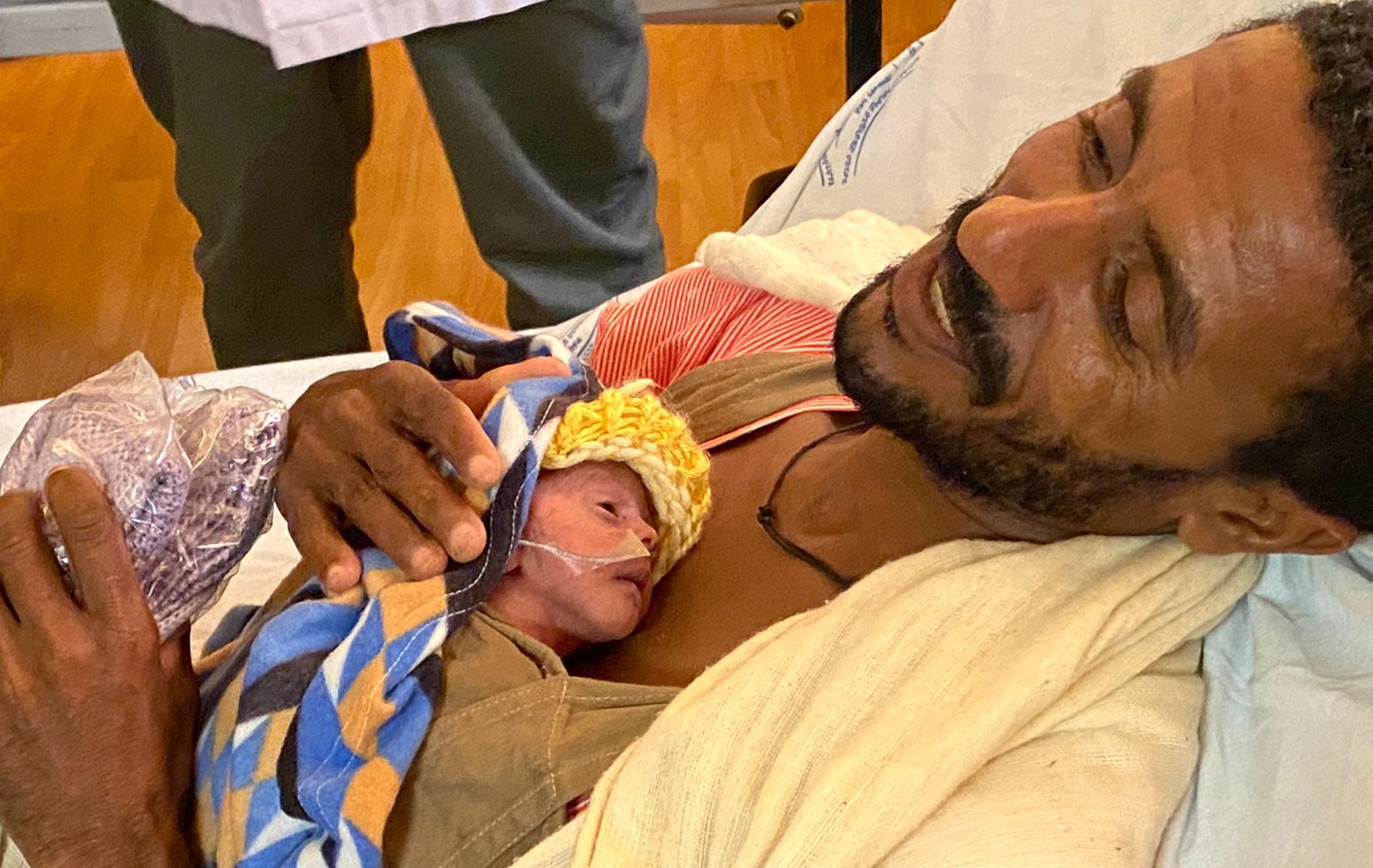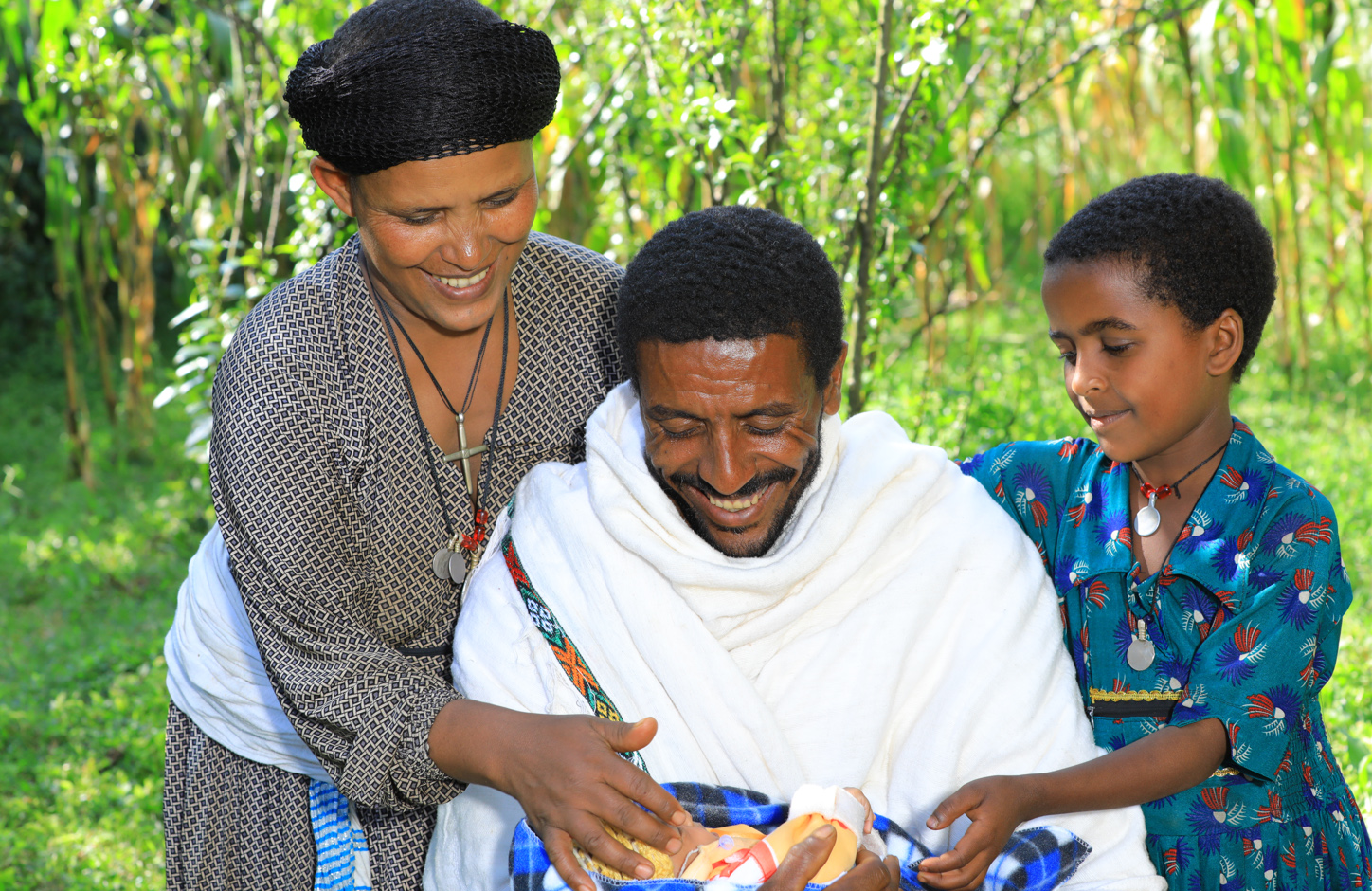A solution to save the smallest lives
Kangaroo Mother (or Father) Care with continuous skin-to-skin contact.

Kangaroo Mother (or Father) Care with continuous skin-to-skin contact.

Abebe Haile didn’t know if his newborn baby would survive. His wife, Mulunesh, had eight previous pregnancies. But only three of her babies survived.
"Our babies were dying before birth or soon after,” Abebe said. “We thought it was because of an RH incompatibility issue in our blood types, but our health worker told us that was not the case."
Abebe lives with his family in the West Gojjam zone of Ethiopia, 65 kilometers away from the hospital in Bahir Dar town. His wife’s two previous births were delivered by cesarean section at Felege-Hiwot Comprehensive Specialized Hospital that focuses on birth complications such as excessive bleeding. During her most recent pregnancy, Mulunesh had several Antenatal Care visits at health facilities where she was given advice about nutrition and received DT vaccine and iron folate supplements.
"We had hoped this time would be different. But when my wife was 28 weeks pregnant, she started to bleed excessively,” said Abebe. “The situation was serious and continued to worsen. To try to save the lives of my wife and baby, it was decided to deliver the baby by cesarean section.”

Immediately, the health workers took the baby to the Neonatal Intensive Care Unit (NICU). Baby Meskerem stayed there for 15 days.
“I didn’t expect that my baby would be in such a serious condition,” said Abebe. “I have no words to express my gratitude to the healthcare workers efforts to save the lives of both my baby and my wife.”
After the birth, there was no one to support Abebe. He was responsible to care for both his newborn baby and his wife who was recovering from her C-section – feeding her, picking up medications from pharmacies, attending to her needs, expressing milk from his wife’s breasts to give to the baby while in the NICU.
The healthcare workers introduced Abebe and Mulunesh to the concept of skin-to-skin care, known as Kangaroo Mother Care (KMC), for preterm or small babies. KMC is the practice of early, continuous skin-to-skin contact between the mother (or caregiver) and the baby with exclusive breastfeeding. There is strong evidence that this method improves survival and health outcomes among low birthweight infants. Abebe Haile committed to the KMC method, keeping the baby in a skin-to-skin position, warm and fed.
"I kept our baby in the skin-to-skin position for at least four to six hours in the daytime and longer at night with the NG tube feeding day and night without rest,” said Abebe. “It was a big job, but I didn’t want my wife to see our baby in this condition. I thought it would be too painful for her. So, I did whatever I could by myself, believing that my eyes are hers too.”
Baby Meskerem began to gain weight and grow. When KMC was initiated, she weighed 1140 grams. After 11 days of care at the KMC unit, Meskerem weighed 1475 grams and began to breastfeed. When she was discharged from the KMC unit, her weight was up to 1745 grams.
"I want to be an example to others. Keeping my baby in the skin-to-skin position for many days and nights helped her to survive,” he said. “I will teach others whose babies have similar health problems to do the same."
Abebe continues to use KMC when he brings Meskerem to check-ups by the Emory University Amhara team at the hospital. He is determined to teach others about the benefits of Kangaroo Mother Care.
“My husband has taught me how to do KMC as well,“ said Mulunesh Zewdie. “In our community, it is unusual for males to keep babies in skin-to-skin positions. But my husband has shown that anyone can give this kind of care for even small babies. I guess this could be called Kangaroo Father Care as well as Kangaroo Mother Care. Anyone can – and should—do it.’’
